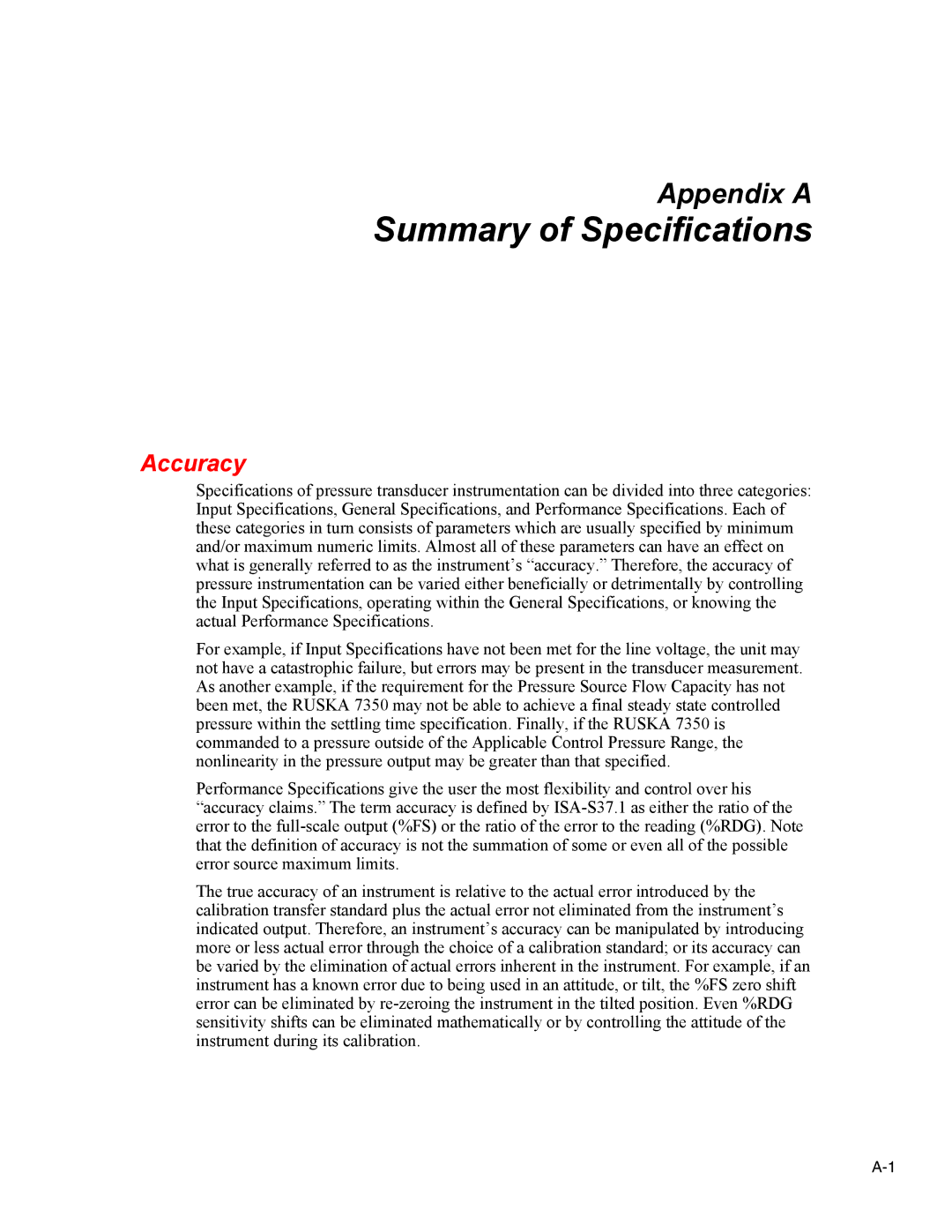Appendix A
Summary of Specifications
Accuracy
Specifications of pressure transducer instrumentation can be divided into three categories: Input Specifications, General Specifications, and Performance Specifications. Each of these categories in turn consists of parameters which are usually specified by minimum and/or maximum numeric limits. Almost all of these parameters can have an effect on what is generally referred to as the instrument’s “accuracy.” Therefore, the accuracy of pressure instrumentation can be varied either beneficially or detrimentally by controlling the Input Specifications, operating within the General Specifications, or knowing the actual Performance Specifications.
For example, if Input Specifications have not been met for the line voltage, the unit may not have a catastrophic failure, but errors may be present in the transducer measurement. As another example, if the requirement for the Pressure Source Flow Capacity has not been met, the RUSKA 7350 may not be able to achieve a final steady state controlled pressure within the settling time specification. Finally, if the RUSKA 7350 is commanded to a pressure outside of the Applicable Control Pressure Range, the nonlinearity in the pressure output may be greater than that specified.
Performance Specifications give the user the most flexibility and control over his “accuracy claims.” The term accuracy is defined by
The true accuracy of an instrument is relative to the actual error introduced by the calibration transfer standard plus the actual error not eliminated from the instrument’s indicated output. Therefore, an instrument’s accuracy can be manipulated by introducing more or less actual error through the choice of a calibration standard; or its accuracy can be varied by the elimination of actual errors inherent in the instrument. For example, if an instrument has a known error due to being used in an attitude, or tilt, the %FS zero shift error can be eliminated by
